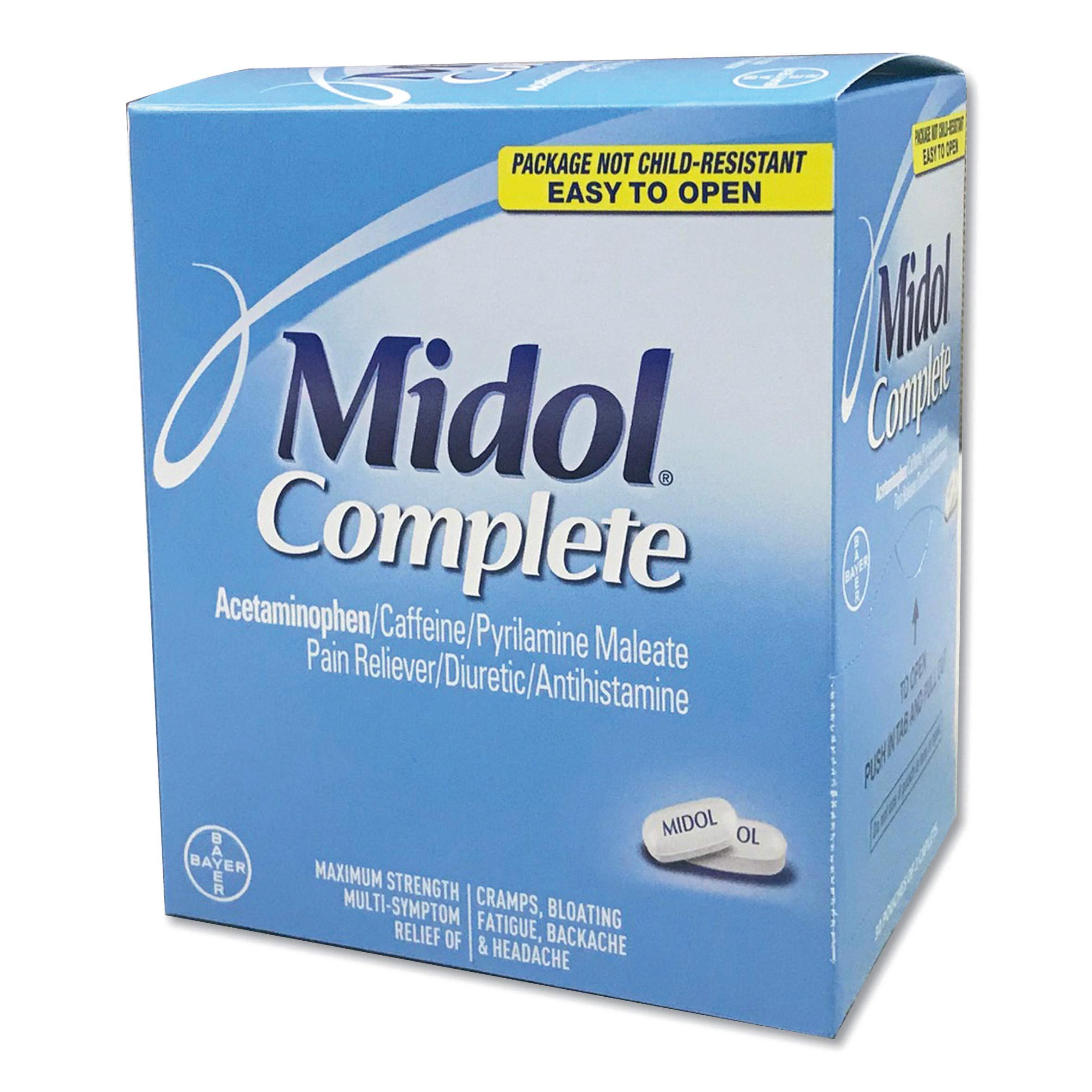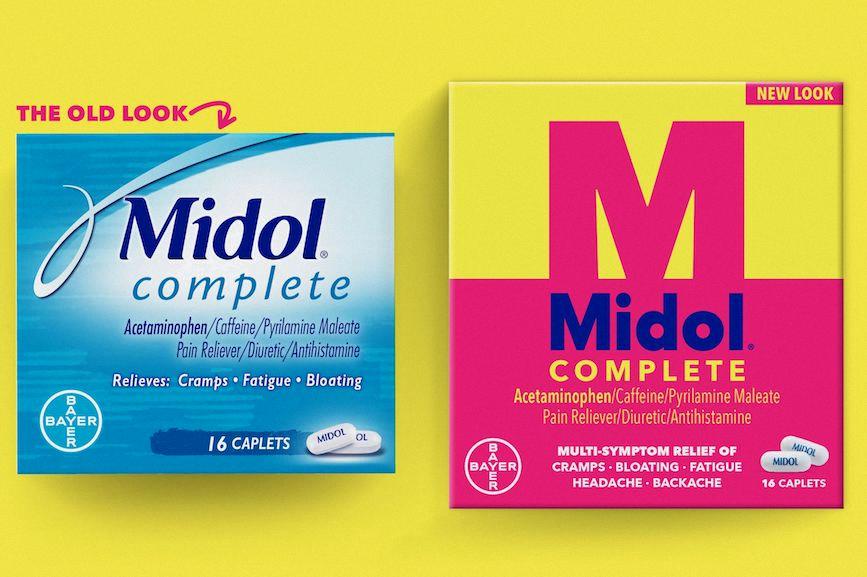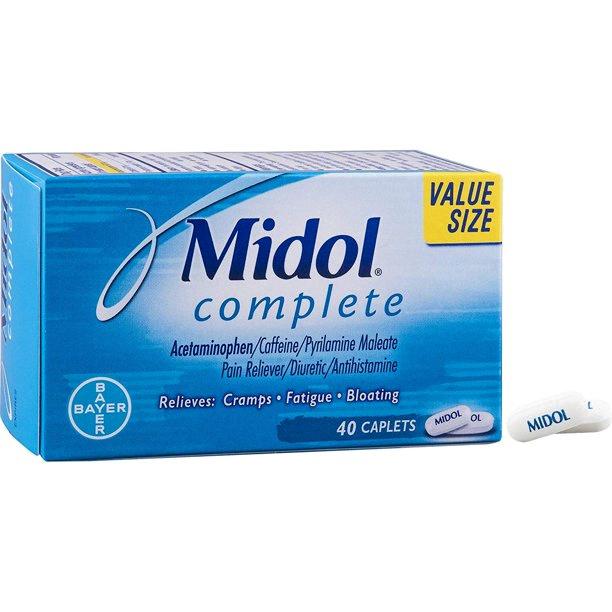Midol is a well-known brand of over-the-counter medication that is specifically formulated to help alleviate symptoms associated with menstrual periods. With a wide range of products available, Midol offers various options to help women manage their menstrual symptoms, including cramps, headaches, bloating, and fatigue. However, some people wonder if Midol makes them sleepy. In this post, we’ll take a closer look at Midol and explore its potential side effects.
First, it’s important to understand that Midol contains thre active ingredients: acetaminophen, caffeine, and pyrilamine maleate. Acetaminophen is a pain reliever that helps to reduce pain and fever. Caffeine is a stimulant that helps to reduce fatigue and increase alertness. Pyrilamine maleate is an antihistamine that helps to reduce inflammation and relieve allergy symptoms.
While caffeine can help to reduce fatigue and increase alertness, it can also cause some people to feel jittery or anxious. Additionally, pyrilamine maleate is a sedating antihistamine, which means it can cause drowsiness or fatigue. Therefore, it’s possible that Midol could make you feel sleepy, depending on how your body reacts to the ingredients.
However, it’s worth noting that not everyone will experience this side effect. Some people may feel energized and more alert after taking Midol, while others may feel drowsy or sleepy. Additionally, the amount of caffeine and pyrilamine maleate in each Midol product can vary, so the effects may differ depending on which product you use.
If you’re concerned about feeling sleepy after taking Midol, it’s important to talk to your doctor or pharmacist. They can help you determine if Midol is the right choice for you and whether any other medications or supplements you’re taking could interact with it.
Midol contains three active ingredients, including caffeine and pyrilamine maleate, that can potentially cause drowsiness or fatigue. However, the effects can vary depending on the individual and the specific product used. If you’re experiencing side effects or have concerns about using Midol, it’s important to speak with your healthcare provider.
Side Effects of Midol
Midol is an over-the-counter medication used to relieve menstrual symptoms such as cramps, bloating, and headaches. Like all medications, Midol may cause side effects in some people. The most common side effects of Midol include upset stomach, nausea, vomiting, headache, diarrhea, constipation, dizziness, and drowsiness. These side effects are generally mild and temporary, and they may go away on thir own as your body adjusts to the medication. However, if any of these effects persist or worsen, it is important to inform your doctor or pharmacist promptly. Additionally, if you experience any serious side effects such as severe abdominal pain, difficulty breathing, or swelling of the face, lips, or tongue, seek medical attention immediately as these may be signs of a serious allergic reaction. It is important to read the label carefully and follow the recommended dosage to minimize the risk of side effects. As always, if you have any concerns or questions about the use of Midol or its side effects, consult your healthcare provider.

Source: amazon.com
How Quickly Does Midol Take Effect?
Midol products are designed to provide relief from symptoms associated with menstrual periods, including cramps, bloating, and fatigue. Typically, Midol products can begin to work within approximately 30 minutes after ingestion. However, it is important to note that the time it takes for Midol to kick in can vary by individual. Factors such as metabolism, body weight, and the severity of symptoms can all impact how quickly Midol takes effect. It is also important to follow the recommended dosage instructions on the packaging and to consult with a healthcare provider if symptoms persist or worsen.
Is Midol Containing Caffeine?
Midol is not just caffeine. While caffeine is one of the active ingredients in Midol, it also contains acetaminophen, which is a pain reliever that helps to reduce fever and relieve mild to moderate pain. Additionally, Midol contains pyrilamine maleate, which is an antihistamine that helps to reduce symptoms of bloating and fatigue. These ingredients work together to provide relief from menstrual cramps, headaches, and other symptoms associated with menstrual periods. So, while caffeine is an important component of Midol, it is only one of several active ingredients that work together to provide relief from menstrual discomfort.
The Special Benefits of Taking Midol
Midol is a unique pain reliever that is specially formulated to provide targeted relief for menstrual cramps and other menstrual symptoms. It contains a combination of ingredients, including acetaminophen, caffeine, and pyrilamine maleate, that work together to reduce pain, inflammation, and discomfort associated with menstruation.
In addition to its menstrual pain relief properties, Midol is also effective in treating other types of pain, such as headaches, muscle aches, and arthritis. The caffeine in Midol acts as a stimulant, helping to enhance the effects of the pain-relieving ingredients and provide a boost of energy to combat fatigue and sluggishness.
Another advantage of Midol is that it comes in different varieties, such as Midol Complete and Midol Extended Relief, whch are tailored to meet the specific needs of different types of pain and provide long-lasting relief.
Midol is a trusted and effective pain reliever that provides targeted relief for menstrual cramps and other types of pain, helping to improve the quality of life for those who suffer from these conditions.
Mood-Boosting Ingredients in Midol
Midol is a medication that is commonly used to alleviate symptoms associated with menstrual cramps, bloating, and mood changes. The active ingredients in Midol that help improve mood are acetaminophen, pamabrom, and pyrilamine maleate. Acetaminophen is a pain reliever that can help alleviate physical discomfort and reduce the intensity of menstrual cramps. Pamabrom is a diuretic that helps to eliminate excess water from the body, which can case bloating and discomfort during menstruation. pyrilamine maleate is an antihistamine that can help soothe tension and irritability, which are common symptoms experienced during a woman’s menstrual cycle. Together, these ingredients work synergistically to help reduce menstrual discomfort and improve mood, making Midol a popular choice for women seeking relief from menstrual symptoms.

Source: prweek.com
Is Midol the Same as Ibuprofen?
Midol is not just ibuprofen, but it does contain ibuprofen as its active ingredient. Midol is a brand name medication that contains a combination of ingredients, including ibuprofen, caffeine, and antihistamines. The ibuprofen in Midol is a non-steroidal anti-inflammatory drug (NSAID) that helps to reduce pain and inflammation in the body. The caffeine in Midol is a mild stimulant that can help to relieve fatigue and drowsiness, while the antihistamines can help to reduce symptoms like sneezing, runny nose, and itching. Midol is typically used to treat symptoms associated with menstrual cramps, but it can also be used for other types of pain and inflammation such as headache, toothache, backache, and arthritis. It is important to note that Midol shold only be used as directed and that individuals should always consult with their healthcare provider before taking any new medication.
The Safety of Taking Three Midol at Once
It is not recommended to take 3 Midol caplets at once. The recommended dosage for adults and children 12 years and older is 2 caplets taken with water, and this can be repeated every 6 hours if needed. Taking more than the recommended dosage can increase the risk of side effects such as stomach bleeding, liver damage, and kidney problems. It is important to always follow the recommended dosage instructions on the packaging or as directed by a healthcare professional. If you have any concerns or questions about taking Midol, it is best to consult with a healthcare provider.
The Effects of Taking Midol
Midol is a medication that is primarily used to relieve menstrual symptoms such as cramps, bloating, and headaches. However, like any medication, it may cause side effects in some people. One of the common side effects of Midol Traditional is feeling nervous and excitable. This may make you feel a bit weird or on edge. Additionally, trouble sleeping, stomach pain or heartburn, upset stomach or throwing up are other side effects of Midol that may contribute to an overall feeling of discomfort. However, it’s important to note that not everyone experiences these side effects and they may vary in severity from person to person. If you are experiencing any adverse effects aftr taking Midol, it’s recommended to consult with your healthcare provider.
The Effects of Taking One Midol
If you take one Midol pill, it should help to relieve the symptoms of menstrual cramps, such as pain, bloating, and headache. The active ingredients in Midol are acetaminophen (APAP), caffeine, and pyrilamine maleate. APAP is a pain reliever and fever reducer, caffeine is a stimulant that can help to reduce fatigue and improve alertness, and pyrilamine maleate is an antihistamine that can help to relieve menstrual-related bloating. It is important to follow the recommended dosage instructions on the package and not exceed the maximum daily dose of 4 pills in 24 hours. Taking too much APAP can cause liver damage or even liver failure, so it is important to be cautious and not exceed the recommended dose. If you experience any adverse effects ater taking Midol, such as an allergic reaction or severe stomach pain, seek medical attention immediately.

Source: walmart.com
Comparing Midol and Ibuprofen
Midol is actually a brand name for a type of pain reliever that contains ibuprofen as its active ingredient. So, in terms of the medication itself, there is no difference between Midol and ibuprofen. However, Midol is marketed specifically for menstrual cramps and other symptoms associated with menstruation, such as bloating and mood changes. It may also contain other ingredients, such as antihistamines or diuretics, which are intended to address these specific symptoms. the main difference between Midol and ibuprofen is the marketing and packaging of the medication, rather than the medication itself.
Conclusion
Midol® is a popular over-the-counter medication that provides relief from menstrual symptoms such as cramps, bloating, and headache. Its active ingredients, including an analgesic, diuretic, and sedating antihistamine, work together to alleviate discomfort and promote relaxation. Although Midol® may cause some side effects such as upset stomach, dizziness, or drowsiness, thee are typically mild and transient. Most importantly, Midol® products can start working in as little as 30 minutes, providing fast and effective relief to those experiencing menstrual discomfort. As with any medication, it is important to follow the recommended dosage and consult a healthcare provider if symptoms persist or worsen. Midol® is a trusted and reliable option for those seeking relief from menstrual discomfort.
